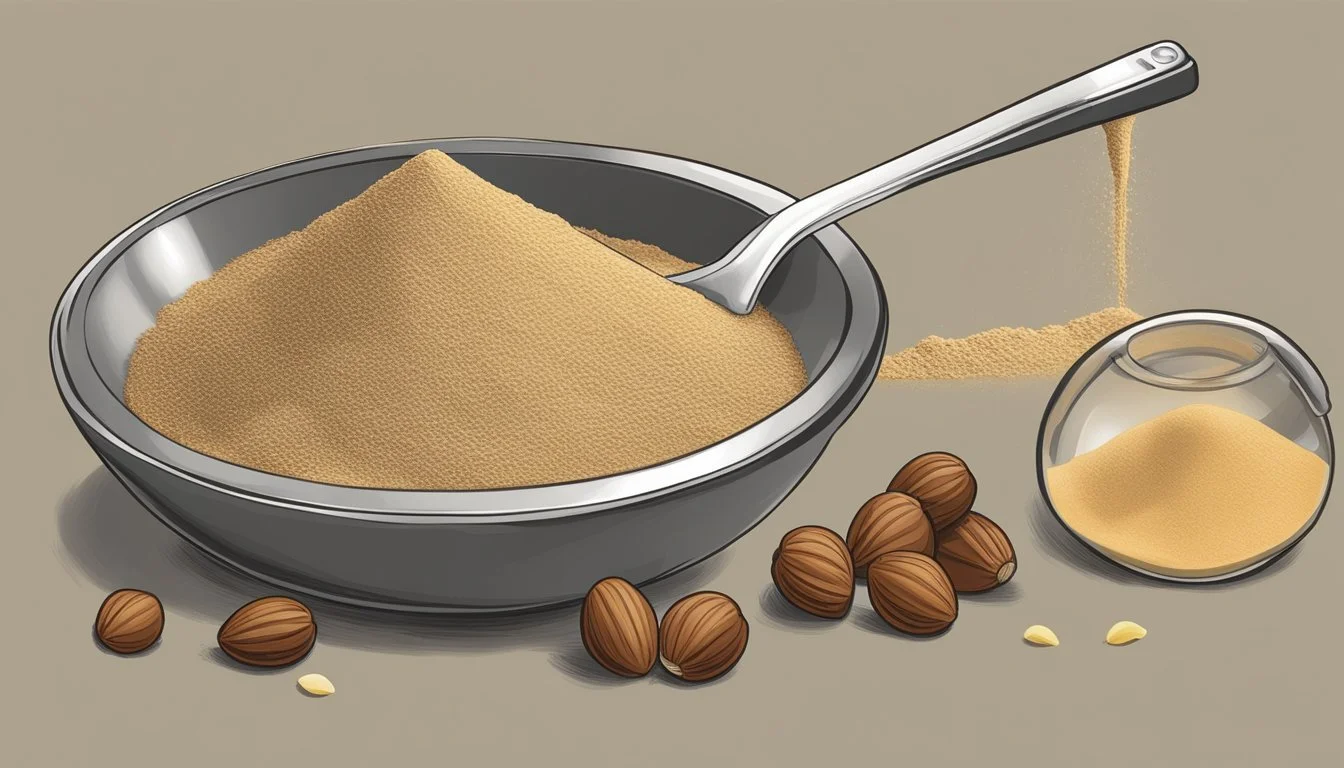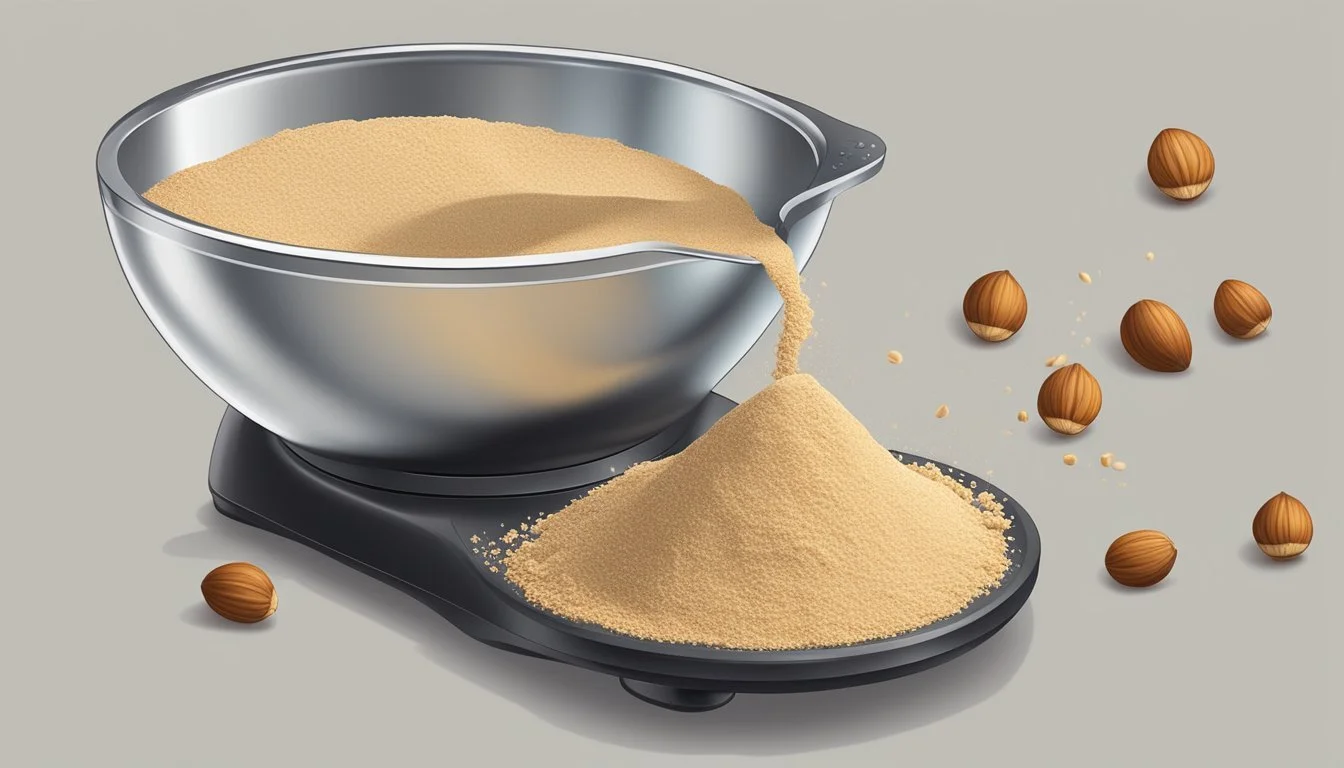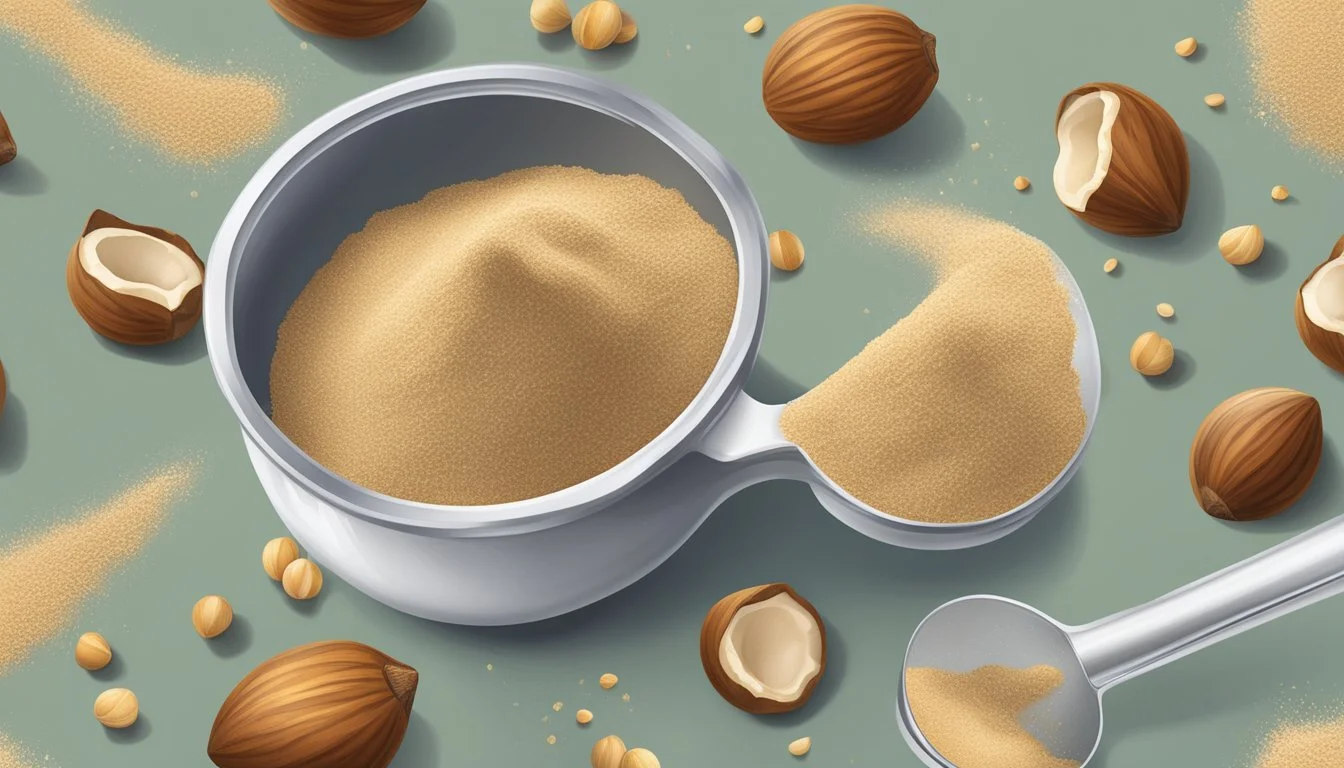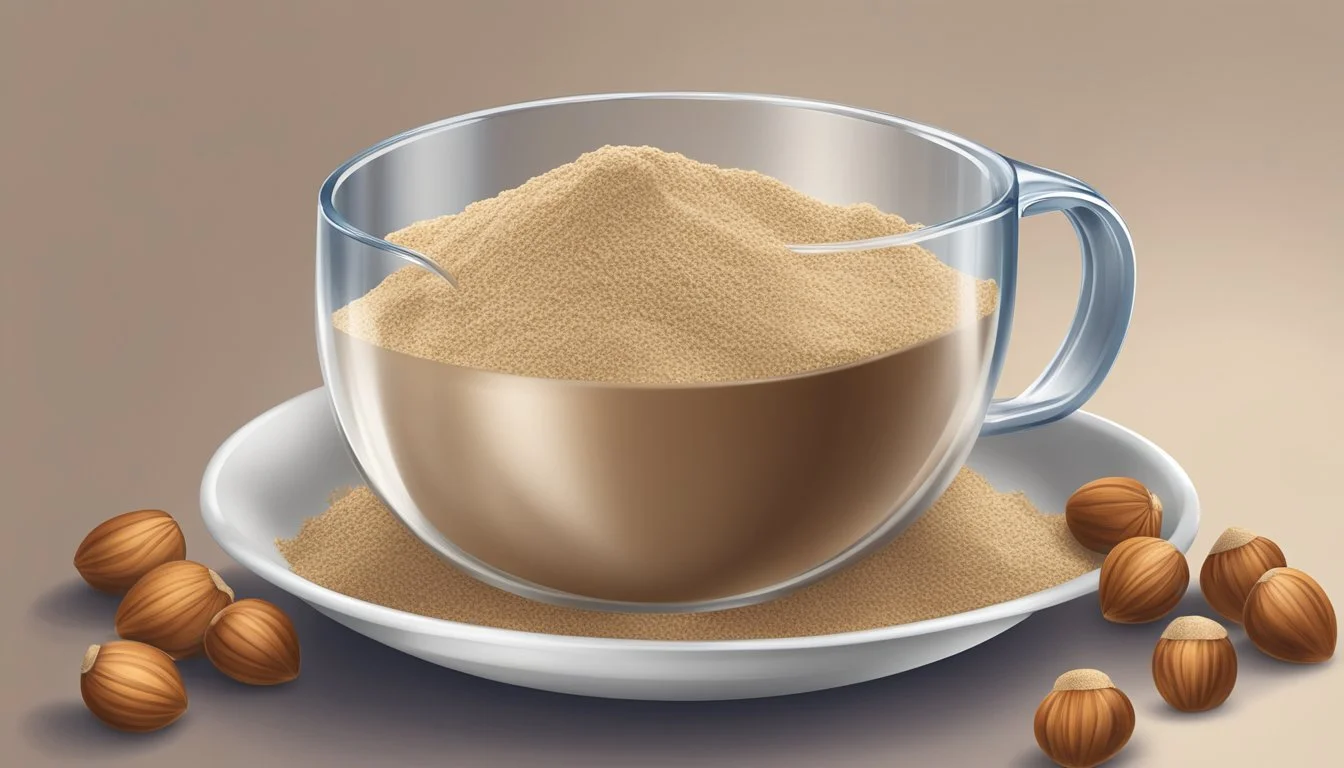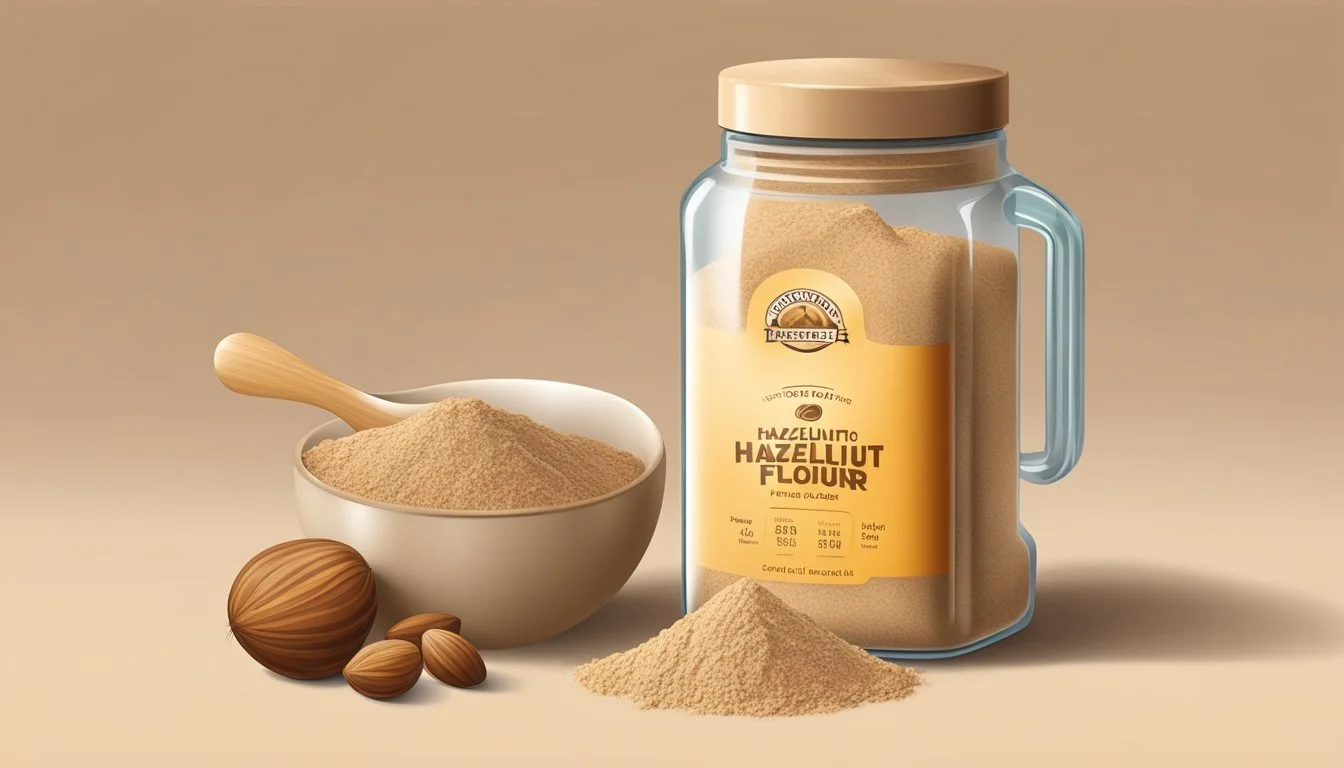How Many Tablespoons in a Pound of Hazelnut Flour
Essential Measurement Guide
Determining the conversion of tablespoons to a pound when working with hazelnut flour is an important aspect of home baking. Precision in measuring ingredients like hazelnut flour is crucial for the success of a recipe, whether one is a seasoned baker or embarking on a new culinary project. Typically, hazelnut flour is sold by weight, which can create some confusion when a recipe calls for a volume measurement, such as tablespoons. The density of hazelnut flour, which is simply ground hazelnuts, can vary slightly depending on the grind, but on average one tablespoon of hazelnut flour weighs approximately 8 grams.
In baking, the consistency and texture of the final product are often determined by the accuracy of the ingredient ratios. As recipes become more sophisticated and ingredients more diverse, understanding the equivalent measurements paves the way for easier and more adaptable baking experiences. Since there are 453.592 grams in a pound, one can calculate the number of tablespoons in a pound of hazelnut flour by dividing the total grams by the weight of a tablespoon of the flour. This knowledge seamlessly supports the integration of hazelnut flour into various recipes, enhancing the flavor profile and nutritional content of baked goods with its rich, nutty essence.
Understanding Hazelnut Flour
Hazelnut flour is a versatile ingredient known for its fine texture and rich, nutty flavor. It provides distinct health benefits and suits various dietary preferences, including gluten-free diets.
Characteristics of Hazelnut Flour
Hazelnut flour, often referred to as hazelnut meal, is made by grinding roasted hazelnuts into a fine powder. It has a characteristic nutty flavor that enhances baked goods. As a gluten-free alternative to wheat flour, it is a popular choice for those with gluten sensitivities. The flour tends to be denser than all-purpose flour, so it may require adjustments in standard recipes.
Health Benefits of Hazelnut Flour
Rich in protein, fiber, and healthy fats, hazelnut flour is not only flavorful but also nutritionally beneficial. Its high fiber content contributes to digestive health. Hazelnut flour is also known for its vitamin E content, which supports skin health and offers antioxidant properties.
Comparing Hazelnut Flour to Other Nut Flours
When comparing to other nut flours, hazelnut flour stands out for its distinct taste. Almond flour is a common substitute, but hazelnut flour provides a stronger, more distinctive nutty flavor. Both flours offer similar protein and fiber content, making them healthy alternatives to traditional flours in baking and cooking. However, the specific flavor profile of hazelnut flour can elevate recipes that complement its rich taste.
Baking with Hazelnut Flour
Hazelnut flour adds a rich, nutty flavor to various baked goods while offering a gluten-free benefit to individuals with celiac disease. It contributes to the texture and taste, expanding the possibilities for both traditional and gluten-free recipes.
Hazelnut Flour in Cake Recipes
When one incorporates hazelnut flour into cake recipes, it imparts a unique nutty taste and a moist crumb to the cake's texture. Since hazelnut flour is dense, it is often paired with other flours or used in recipes that are specifically developed for nut flours to prevent overly heavy cakes. A common blend might include a mixture of hazelnut flour and all-purpose flour in a ratio that maintains the lightness of the cake while introducing the distinctive hazelnut flavor profile.
Cookies and Pastries with Hazelnut Flour
Hazelnut flour can elevate cookies and pastries to a new level of flavor intricacy. It works exceptionally well in recipes where its nutty essence complements other ingredients, such as chocolate or fruit-based sweets. Bakers typically use it as a portion of the total flour required in a recipe to enhance texture, adding richness and a tender crumb to cookies and pastries. Due to its high-fat content, adjustments in the recipe's fat may be necessary to achieve the desired consistency.
Gluten-Free Baking with Hazelnut Flour
For those baking for celiac disease or preferring gluten-free options, hazelnut flour serves as an excellent alternative to wheat flour. Its high protein and fiber make it nutritionally beneficial while providing structural support in baked goods that might otherwise lack the binding properties of gluten. Proper ratios are key; mixing hazelnut flour with other gluten-free flours can create a balanced blend that mimics the desired qualities of traditional baked goods without the gluten.
Conversion Ratios
When dealing with hazelnut flour, understanding the conversion ratios from volume to weight is essential for precision in recipes. With hazelnut flour’s different properties, these ratios are vital for successful baking results.
Volume to Weight Conversions
Tablespoons, as a unit of volume, are often used in cooking for measuring both liquids and solids. However, when it comes to dry ingredients like hazelnut flour, chefs and bakers frequently need to convert these measurements into weight for better accuracy. This is because the density of hazelnut flour can affect the volume-to-weight relationship. Here is a basic conversion to initiate this process:
1 pound of hazelnut flour = approximately 53 tablespoons
To ensure precision, use a scale to measure weight, especially when working with larger quantities. Below is a table that represents common conversions between volume and weight for hazelnut flour:
Volume (Tablespoons) Weight (Ounces) Weight (Grams) 1 0.30 8.5 10 3.0 85 53 (1 pound) 16 453.6
Bakers should note that the density of hazelnut flour can lead to slight variations in these conversions. They are advised to calibrate their scales and measure their ingredients accordingly for the utmost accuracy.
Hazelnut Flour to Wheat Flour Conversions
While wheat flour is the more traditional choice in baking, hazelnut flour is a popular alternative, especially for those looking for gluten-free options. It is important to note that wheat flour and hazelnut flour have different densities, which affects their conversion rates. A general rule of thumb is:
1 cup of wheat flour weighs approximately 4.41 ounces (or 125 grams)
1 cup of hazelnut flour tends to be lighter, with a weight closer to 3.88 ounces (or 110 grams)
For recipe adaptations, bakers can use these figures to substitute wheat flour with hazelnut flour or vice versa, keeping in mind the textural differences these flours may impart to the final product.
Baking success often hinges on the precision of ingredient measurements. This is even more crucial when substituting or working with alternative flours like hazelnut flour where the variance in density and weight compared to traditional wheat flour must be factored in. Bakers should adjust their recipes carefully, using these conversion ratios as a guide to maintain balance in their baked goods.
Kitchen Tips and Techniques
Crafting the perfect bake with hazelnut flour hinges on precise texture and flavor management along with diligent storage practices to maintain freshness.
Achieving Desired Texture and Flavor
For bakery items like cakes and cookies that require a fine, powdery consistency, users should ensure hazelnut flour is processed to a fine degree. A food processor or blender can be used to grind hazelnuts into a flour, which ideally resembles the texture of traditional all-purpose flour. When aiming for a buttery taste in pancakes or other baked goods, one may consider roasting the hazelnuts prior to grinding, which brings out a rich, toasty flavor profile to the flour. It’s important to monitor the grinding process carefully to prevent the nuts from turning into hazelnut butter, as a result of over-processing.
If cooking at high temperatures, one must remember that hazelnut flour can burn easily due to its high fat content. Thus, it's recommended to use recipes that are designed for nut flours, or to adjust baking times and temperatures accordingly to avoid scorching.
Storage and Shelf Life of Hazelnut Flour
Storing hazelnut flour correctly is crucial to preserve its flavor and texture, and to prevent it from becoming rancid. It should be kept in an airtight container away from heat and light. For long-term storage, placing it in the refrigerator or freezer can greatly extend its shelf life.
Storage Location Shelf Life Pantry Up to 1 month Refrigerator Up to 6 months Freezer Up to 12 months
Remember to let the flour return to room temperature before using it, as this helps ensure a consistent texture in the final product. When measuring hazelnut flour for recipes, a scale is preferred for accuracy since volume measurements can vary significantly due to the flour's density and possible compaction.
Recipe Development
When creating or adapting recipes for baking with hazelnut flour, precise measurements and understanding of ingredient interactions can significantly affect the outcome, whether one is making cakes, baked goods, or granola.
Creating New Recipes with Hazelnut Flour
When one embarks on the journey of creating new recipes using hazelnut flour, they often encounter a rich texture and nutty flavor that can enhance various baked goods. For example, in cake recipes, hazelnut flour can contribute to a more sophisticated taste profile. However, consideration must be taken regarding the flour's fat content, which may alter the ratio of other ingredients like butter or eggs.
Yield: Bakers should note that 1 pound of hazelnut flour roughly equals 4 cups or 16 ounces by volume.
Egg Interaction: Hazelnut flour works well with eggs, which help bind the mixture due to the lack of gluten.
Sweetness: Hazelnut flour pairs well with sugar, enhancing the natural sweetness of the nuts.
Leavening Agents: One may need to adjust the amount of baking powder, yeast, or baking soda used in traditional recipes to ensure proper rise and texture.
Adapting Recipes for Hazelnut Flour Use
Bakers adapting conventional recipes to include hazelnut flour should be mindful of its unique properties. It can replace a portion of all-purpose flour in baked goods like cookies, but one should not replace it entirely unless the recipe explicitly calls for it.
Granola: Hazelnut flour can be added to homemade granola recipes for a nuttier flavor and a boost in nutritional value.
Texture: Baked goods may have a denser texture due to the flour's heavier weight per cup compared to wheat-based flours.
Moisture Content: Since hazelnut flour contains natural oils, one typically uses less butter or oil in the recipe.
Making careful adjustments to traditional recipes or confidently creating new ones with hazelnut flour results in a variety of delightful and distinctive homemade baked goods.
Nutritional Considerations
When incorporating hazelnut flour into a diet, one should consider its rich nutritional profile and relevance to various dietary needs and restrictions.
Dietary Impact of Hazelnut Flour
Hazelnut flour is known for its nutrient-dense composition, containing a substantial amount of monounsaturated fats, which can be beneficial for heart health. As a gluten-free alternative to wheat flour, it suits those with celiac disease or gluten sensitivities. Rich in dietary fiber, it contributes to digestive health and can fit into a low-carb diet, offering sustained energy with a lower calorie count compared to traditional flour. Here is a breakdown of its key nutrients per 100 grams:
Calories: approximately 628
Total Fat: 60.8g
Saturated Fat: 4.5g
Monounsaturated Fat: 46.2g
Polyunsaturated Fat: data not provided
Carbohydrates: 4.7g
Dietary Fiber: 2.7g
Protein: 4.2g
Essential minerals such as calcium, potassium, iron, and manganese, along with vitamins like vitamin E, folate, and copper, are also present in measurable quantities.
Allergies and Dietary Restrictions
While being a boon for gluten-free and low-carb diets, hazelnut flour can be a concern for individuals with nut allergies, which can be severe. Its consumption should be strictly avoided by anyone with an allergy to hazelnuts.
For others with dietary restrictions, it is important to note that hazelnut flour is free from animal products, making it suitable for vegan and vegetarian diets. It lacks vitamin C, meaning additional sources of this vitamin may be necessary to meet daily nutritional needs.
Versatility in Cooking
Hazelnut flour, ground from whole hazelnuts, is a nutritious alternative to regular flour and a versatile ingredient in the kitchen, able to incorporate rich, nutty flavors into a variety of dishes.
Beyond Baking: Using Hazelnut Flour in Cooking
While commonly associated with baking, hazelnut flour can go beyond sweet treats. Chefs can use this wholesome ingredient to create a flavorful crust on proteins such as chicken, fish, or meatballs, replacing breadcrumbs for a gluten-free option with a satisfying crunch. Hazelnut flour's binding properties can also enhance the texture of veggie patties or as a thickener in sauces, ensuring a hearty result enriched with the nutty essence of ground hazelnuts.
Meatballs: Incorporate into the meat mixture to add richness and enhance consistency.
Chicken: Apply as a coating before pan-frying for a crispy and flavorful crust.
Fish: Use as a delicate crust for baked or sautéed fish fillets.
Substitutes for Hazelnut Flour in Recipes
Should one need to substitute hazelnut flour in a recipe, several alternatives are available. One can opt for other nut flours such as almond flour, which behaves similarly in most recipes. If nut allergies are a concern, cooks might choose ground oats or breadcrumbs based on the dish. When substituting for hazelnut flour, it is crucial to consider the unique flavor and texture it brings and seek alternatives that offer similar characteristics without overwhelming the other ingredients.
Almond Flour: A near one-to-one substitute in both flavor and texture.
Ground Oats: Provides a similar binding quality for savory dishes.
Breadcrumbs: Ideal for coatings and crusts, though not gluten-free.
Innovative Uses of Hazelnut Flour
Hazelnut flour, known for imparting a nutty flavor and tender texture, elevates sweet and savory dishes alike. Its versatility makes it a prized ingredient in kitchens around the globe.
Hazelnut Flour in Confectionery
Baci di Dama: These Italian "ladies' kisses" cookies are traditionally made with hazelnut flour, shaped into two hazelnut-sized hemispheres, and joined with a chocolate ganache.
Chocolate Desserts (What wine goes well with chocolate desserts?): Hazelnut flour integrates seamlessly into chocolate-based treats, boosting the richness while ensuring a tender crumb in cakes and muffins.
Energy Bars and Toffee: The flour serves as an excellent base for homemade energy bars and toffee, providing a balance of flavor and consistency that complements additional nuts or dried fruits.
Savory Dish Enhancement with Hazelnut Flour
Dough Development: Chefs can incorporate hazelnut flour into bread and pizza dough to introduce a unique taste and improve the nutritional profile.
Nutella and Hazelnut Spreads: Homemade Nutella can be elevated by the inclusion of hazelnut flour, intensifying the spread's signature hazelnut essence.
Enriching Sauces and Coatings: When added to sauces or used as a coating for proteins, the flour imparts a subtle, earthy note, enhancing the depth of the dish without overpowering other flavors.
Culinary World of Hazelnuts
Hazelnuts, integral to a myriad of culinary applications, have a rich legacy and a complex process behind their production which directly affects their use in food.
History and Popularity of Hazelnuts
Hazelnuts have been consumed since ancient times, with historical evidence suggesting that these nuts were a staple in diets as far back as 9,000 years. They gained prominence in Europe and have been cultivated for centuries, particularly within the regions that would come to include modern-day Turkey and Italy. Today, hazelnuts are celebrated for their rich, nutty flavor and are utilized in a variety of culinary contexts—from the raw kernels added to confections and salads to hazelnut flour used in gluten-free baking and grain alternatives.
Hazelnut Farming and Production
The production of hazelnuts is a complex process, with Turkey standing as the top producer globally. Following pollination, it takes about seven to eight months for hazelnuts to mature on the tree. They are typically harvested in the autumn when the nuts fall to the ground, either naturally or through mechanical shaking. Once collected, hazelnuts are dried and sorted. Raw hazelnuts are then processed into different products, such as roasted nuts, pastes, and flours. Hazelnut flour, which is made by grinding roasted hazelnuts into a fine powder, has seen increasing use as a grain-free alternative in baking, owing to its flavorful and nutritious profile. The demand for hazelnut products continues to grow, as they offer a gluten-free option and contribute healthy fats and protein to diets around the world.
Shopping and Brand Guide
When purchasing hazelnut flour, shoppers should focus on the quality and taste reflecting the brands' commitment to fine ingredients.
Selecting the Best Hazelnut Flour
Consumers must consider the texture and purity when selecting hazelnut flour. Texture should be fine and sand-like, ensuring a consistent blend when used in recipes. Purity refers to the flour being 100-percent hazelnuts, without additional grains or fillers, preserving the natural, nutty flavor and gluten-free quality.
Fine Texture: Sand-like, smooth, not coarse
100% Hazelnut: No other grains, gluten-free
Decoding Labels and Brands
Understanding labels is key to ensuring the shopper is getting a premium product. One should look for flours that are non-GMO and, if possible, organic. Brands often indicate whether the nuts are blanched or if they include the skin—a detail that can affect both the taste and nutritional profile.
Non-GMO: Genetically unmodified ingredients
Organic: Free from synthetic pesticides and fertilizers
Blanched vs. Skin-On: Influences taste and texture



